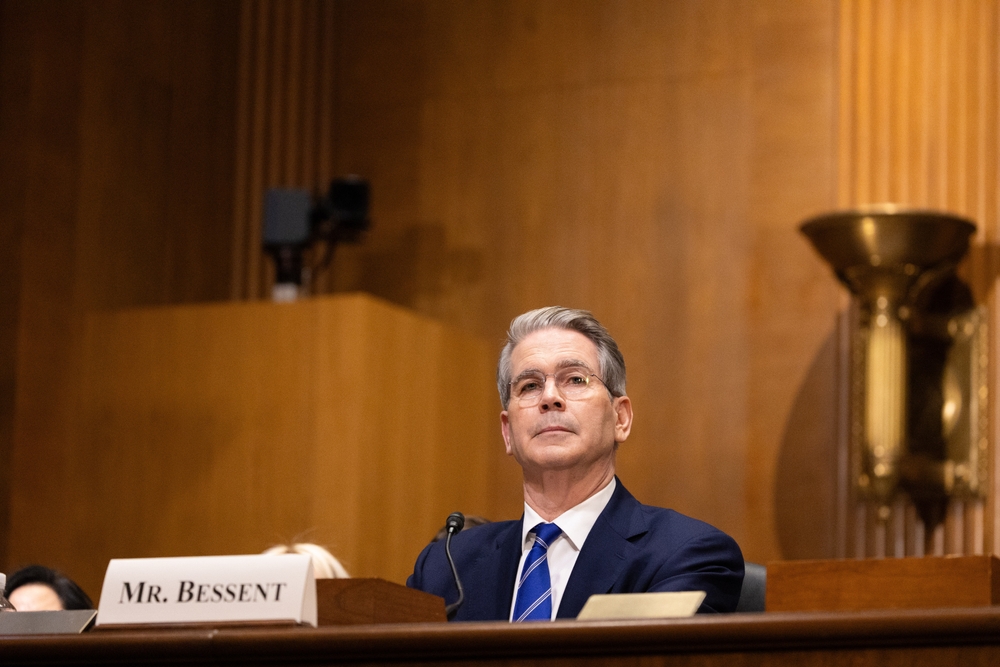Whenever I analyze Nvidia (NVDA), I see a company perfectly poised to reap the tremendous value of AI growth today. Nvidia isn’t simply along for the ride. It’s creating the tools by making meaningful chips, software, and services that power AI systems. I’m enthusiastic and bullish about its potential because of its leadership position and pioneering attitude. However, investors must monitor changing economic trends, emerging AI advancements, and geopolitical risks.
Just yesterday, DBS analyst Fang Boon Foo maintained his bullish stance on NVDA stock by reiterating his Buy rating and citing NVDA’s dominance in the AI-chip market as a “significant factor” underpinning the company’s lead in cutting-edge GPUs for high-powered applications such as AI and machine learning. The analyst also sees NVDA’s plans to regularly upgrade its AI accelerators with Blackwell chips as a reason to expect eight consecutive quarters of substantial revenue increases when NVDA reports Q1 earnings later this month.
Nvidia is Poised to Succeed Despite DeepSeek Influence
Nvidia hardware dominates now, but emerging open-source AI tools like DeepSeek’s large language models (LLMs) and Mixture-of-Experts (MoE) architectures present intriguing possibilities. DeepSeek constructed a strong model similar to GPT-4 with considerably fewer GPUs—only 2,048 Nvidia H800 units, while tens of thousands are normally required.
DeepSeek’s method dramatically reduces the computing power needed by using only essential model parts for each request. This could slow down the future need for GPUs. Now, more people can use AI, which helps Nvidia, but there might be less demand later if these methods are widely used. In particular, companies may choose smaller, improved AI systems, leading to buying fewer GPUs for each use.
These cheaper offerings are the product of optimized algorithms and model advancements, including 4-bit quantization and sparsity. However, Nvidia’s forward investment in software infrastructure, such as TensorRT and Triton Inference Server, continues to make its hardware appealing despite such efficiency gains.
Trump’s Economic Policies Are Helping Nvidia to Expand
From a macroeconomic perspective, President Trump’s and Treasury Secretary Scott Bessent’s re-election provides compelling reasons for Nvidia to be hopeful. Their policies, particularly reduced corporate taxes, accelerated depreciation, and encouragement of technological research and development, are likely to yield significant benefits. Specifically, permitting businesses to fully depreciate their technology expenditures will enhance the demand for Nvidia’s hardware as enterprises ramp up investments in AI infrastructure.

Bessent’s latest remarks reveal a strategy favoring tax benefits for industries like AI and quantum computing, underscoring the government’s pro-growth stance. Lower business taxes and sensible expense guidelines might substantially drive Nvidia’s net income and earnings per share upward, boosting the company’s intrinsic value.
In addition, expected deregulation to streamline infrastructure projects would help Nvidia, as it would lower the hurdles for its data center customers. More straightforward approvals for major infrastructure could lead to more AI projects, driving Nvidia hardware sales. Also, bullish expectations for monetary policy, including possible interest rate cuts in late 2025, could lower financing costs for Nvidia’s customers, thus lengthening the AI investment cycle.
Managing Global Issues and Supply Chain Challenges
Yet, Nvidia’s future is not free of peril, especially from geopolitical risk. Trump’s unpredictable trade policy (slapping triple-digit tariffs on Chinese imports and baseline universal tariffs of 10%) poses a clear and present danger to Nvidia’s operating strategy.
Tariffs have also been suggested for Taiwan, Nvidia’s main ally for manufacturing. These tariffs could deeply affect Nvidia’s normally high margins or require passing the cost on to purchasers, potentially affecting top-line growth. Reshuffling the supply chain, including moving assembly to the U.S., will eventually mitigate the tariff impact, but it requires time.

Additionally, worsening U.S.-China tensions jeopardize Nvidia’s Chinese market, which accounts for about 20% of its data center revenue. China’s possible retaliatory actions, such as preferring local AI chip vendors like Huawei’s HiSilicon, could meaningfully dent Nvidia’s long-term growth outlook in the region. Therefore, Nvidia’s geopolitical risk is a key consideration for investors.
Base, Bull, and Bear Valuation Scenarios
My base-case projection sees Nvidia steady as the initial AI hype fades away, landing at approximately $5 in TTM non-GAAP EPS by the middle of May 2026. With a 32x non-GAAP P/E multiple (a conservative investor sentiment adjustment), Nvidia could be at about $160 per share.
In a best-case situation, Nvidia makes money from its expanding software and services supported by good economic policies. With steady earnings growth to possibly $5.50 a share, a higher valuation multiple of approximately 35x is warranted, which puts the stock price at around $190.

On the other hand, a bear case accounts for strong tariff effects, deeper market share losses from efficiency improvements, and increased global tensions that can notably reduce Nvidia’s earnings and access to markets. In this instance, earnings can dip to around $4.75 EPS, leading to a more conservative 25x multiple, which gives a stock price of $120.
What is Nvidia’s Price Target?
On Wall Street, Nvidia has a consensus Strong Buy rating based on 34 Buys, five Holds, and one Sell ratings acquired over the past three months. The average NVDA price target is $164.35, indicating a 40% upside potential over the next 12 months.

Nvidia Is Still the Market’s AI Darling
As an investor, I believe Nvidia is strongly positioned in the emerging AI landscape, supported by solid economic fundamentals and a robust ecosystem strategy. That said, I’m closely watching shifts in the broader economy, productivity gains from initiatives like DeepSeek, and geopolitical developments that could alter the company’s growth path.
Investors should pay attention to trends in gross margins, the pace of revenue expansion from AI software, and the evolving dynamics of U.S.-China trade, all of which will shape the outlook in the months ahead. At present, I remain highly bullish — Nvidia is my largest holding, representing 15% of my portfolio. I’m confidently targeting $160 per share over the next 12 months.

















